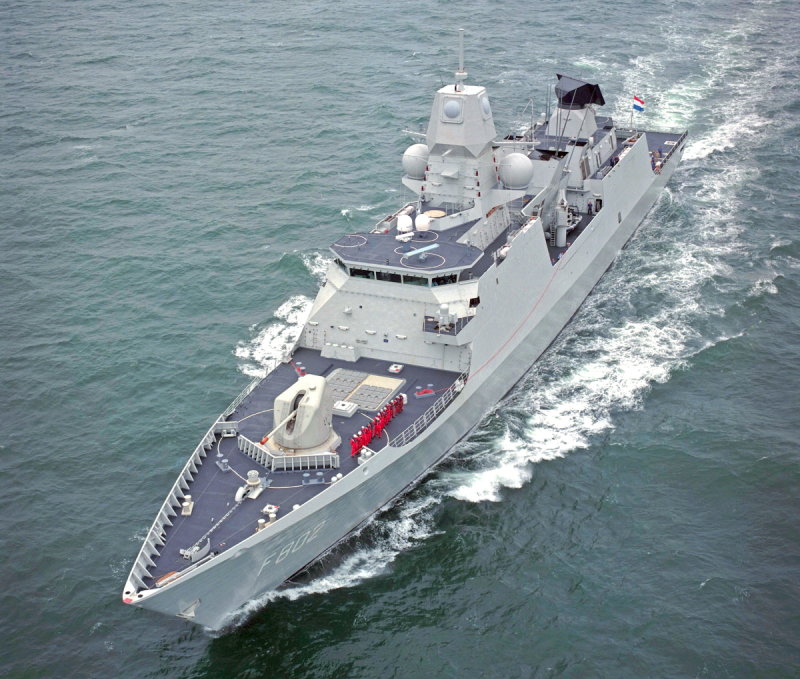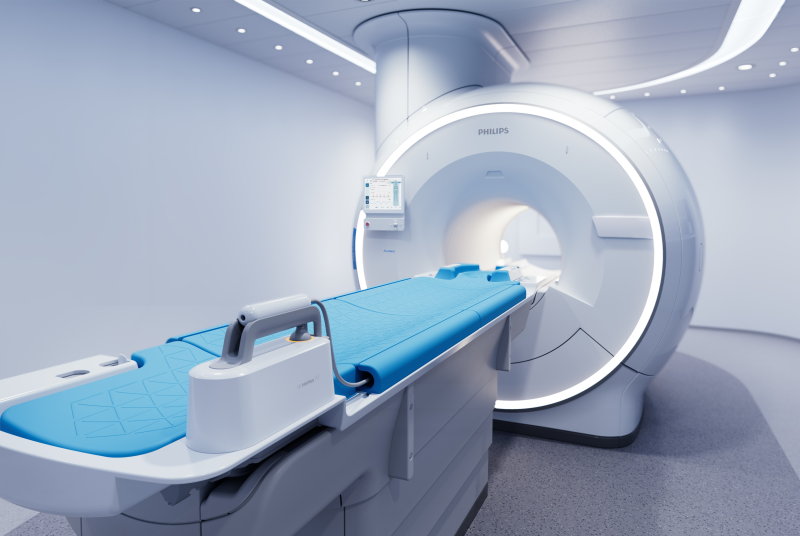Your cart is currently empty!
Polaris brings together top Dutch experts for RF breakthroughs
From defense to healthcare, RF technology is everywhere, and the challenges are often the same. With Polaris, leading companies and universities join forces to keep the Netherlands at the forefront of this strategic domain.
RF technology can be found in Thales’ radar systems for the army and the navy, in the MRI systems that Philips supplies to hospitals and in NXP’s communication systems. Despite operating in different fields, companies often face similar challenges when integrating the technology with the associated hardware and software. Therefore, Thales and TNO took the initiative to join forces in the Polaris program.
“Although the applications differ, the technological challenges for integrating RF systems are very similar,” says Mark van Helvoort, Ecosystem program line manager at Polaris. “Consider cooling the systems, preventing spill-over or transmission and reception signals interfering with each other. By tackling these bottlenecks together, companies can benefit from each other’s expertise and develop innovative solutions that might otherwise have remained out of reach.”

National Growth Fund
In the Polaris consortium, several parties come together: the technical universities of Delft, Eindhoven and Twente, research organizations TNO and CITC, the companies Thales, Philips, NXP, Neways, Bronkhorst and Altum RF and the regional development companies BOM and Oost NL. Thales and Philips are leading in the two most important application areas: defense and healthcare. NXP and Altum RF focus on communication and Bronkhorst is working on flow solutions to cool the RF chips. TNO and CITC are at the forefront of various aspects of RF technology and can bridge the different domains. Neways makes new technology scalable, after which BOM and Oost NL can help bring it to the industry.
The Polaris partners aim for technological breakthroughs in RF systems that contribute to both economic growth and (inter)national safety. Among other things, they hope to extend the radar’s range and make MRI scanners more compact and faster by developing digital RF receivers. This way, they want to strengthen the position of the Netherlands as a world leader in RF as well as boost the development of new products, startups and jobs. They also welcome collaboration with other European countries to contribute to Europe’s strategic autonomy in the RF domain.
A collaboration between the Ministry of Defense and civilian parties used to be hard to imagine, according to Van Helvoort. “For decades, those worlds have been deliberately kept separate. But the changing geopolitical landscape makes the importance of well-organized security measures increasingly clear, creating space for such a broad alliance.”

“The Netherlands is known for its mixed-signal systems, a combination of analog and digital RF technologies,” adds communications consultant Kees Stokla. “We’re one of the few countries that have all the knowledge to support these technologies in-house. We’re competing at the highest level. With the rise of China and the shifting position of the United States, it becomes more important that the Netherlands, and with us Europe, maintains its leading position. It makes perfect sense for the National Growth Fund to invest in this now.” Contributions from the industry partners supplement this 101.7-million-euro investment.
Polaris is divided into four program lines: Research, Valorization, Ecosystem and Human Capital. The initiative is led by independent program director Frank Biemans. He’s supported by the management team, which, in addition to Van Helvoort and Stokla, consists of Maren Bödding, Raymond van Dijk, Hans Schurer and Marcel van der Graaf.
Initial ideas
Last year, technical experts from all partner organizations came together to brainstorm about the research needed to tackle the various challenges. As a result, Polaris was able to hit the ground running on 1 January. One of the projects that’s widely supported within the consortium is the scale-up of antenna arrays. “To fit more antenna elements on a surface, all the technology has to be miniaturized,” explains Van Helvoort. “This, in turn, leads to challenges around cooling, power distribution, spill-over, data processing, semiconductor packaging and more. The parties in the consortium each have expertise in a specific area. By bringing this expertise together, Polaris can work more efficiently toward innovative solutions.”
The participants will also take on completely new concepts. For example, there are several proposals for power amplifiers, including fully digital transmitters and concepts that exploit the advantages of gallium nitride (GaN). Compared to silicon, GaN is more efficient and switches faster, which leads to higher power density.
Advanced packaging and integration techniques, such as 3D integration, can further optimize the miniaturization and performance, which allows for smaller modules and simplified assembly. This requires advanced packaging technologies such as lithographic patterns for redistribution layers, high-aspect-ratio via holes and 3D interconnects embedded in molded plastics.

However, with 3D integration, the component density also increases, which means changes to the thermal distribution and dissipation. Currently, limitations due to heat generation are partly solved by alternative material choices, but a fundamental adjustment in the system architecture would be preferable. This is where Bronkhorst’s flow cooling systems may come in. The company uses micro-electromechanical systems (MEMS) that can measure and control fluid flow in a chip’s microchannels. By integrating liquid flow into the substrate, heat can be dissipated directly. In addition, sensors can be added to these liquid channels to monitor and regulate the flow, coolant stability and temperature gradients.
Miniaturization of the modules also brings new challenges in terms of electromagnetic interference. Packaging design must carefully consider the choice of materials to minimize unwanted effects while preserving RF performance. In addition, defense and healthcare applications require this packaging to meet specific environmental requirements. In MRI, for example, it mustn’t cause artifacts in the image.
Within the Valorization program line, preparations are being made to translate new knowledge into current applications. This takes a project from the research phase into development. At the moment, Polaris focuses on mapping out all the requirements and wishes of future applications and comparing promising design concepts. In a later stage, prototypes will be built to demonstrate these new innovations. Here, a party like Neways can contribute significantly.
The Ecosystem program line focuses on building and managing partner networks to introduce new technologies to companies or to connect other parties with relevant technological knowledge. BOM and Oost NL can support the consortium’s expansion and supervise new startups.
On the one hand, the Human Capital program line focuses on setting up education around RF systems engineering as part of the basic training. On the other hand, the intention is to keep current professionals up-to-date on the latest developments by developing lifelong learning pathways.
Four months into the project, the first research ideas were approved following a positive recommendation from the technical advisory board, which comprised experts from all parties involved. Over the next eight years, various research projects will be launched in which PhD students from the participating universities will work closely with the partner companies to tackle the identified challenges. Right now, the search for the required PhD students is in full swing.
This article was written in close collaboration with Polaris.


